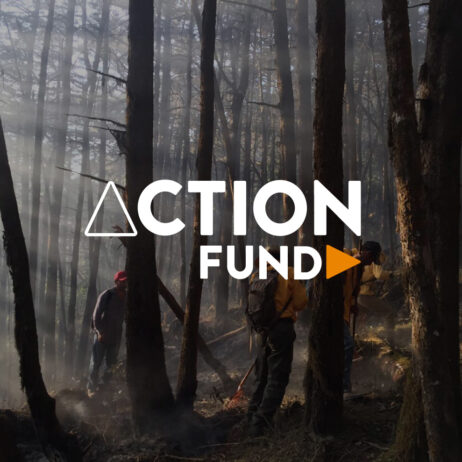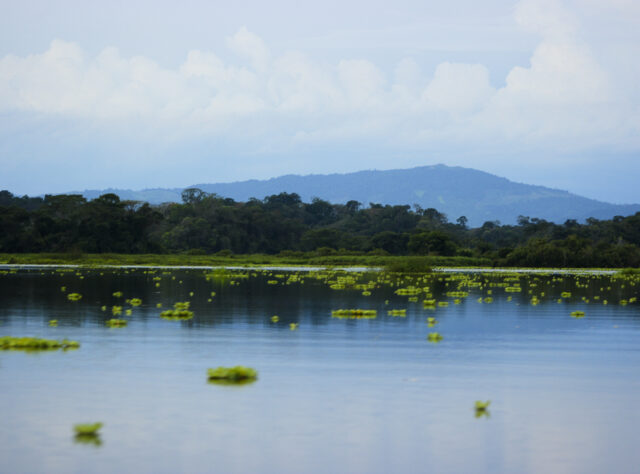
Wetlands are found in every corner of the world. Some lay far inland as low-lying swamps and peatlands; others line the coasts as lagoons, saltwater marshes, and mangrove forests. Credit: Fundación Biodiversa Colombia
“If rainforests are the lungs of the planet, then wetlands are the lifeblood”
– The Ramsar Convention on Wetlands
An incredible 40% of plants and animals rely on wetlands for their survival. For freshwater and marine species alike, the unique conditions in marshes, estuaries, and mangrove forests create an irreplaceable home for countless rare and endemic species.
As well as the permanent residents, every year, coastal wetlands are also stopping places for millions of migratory birds. Despite all this, climate change, pollution, drainage for croplands, and coastal construction have caused the loss of more than 87% of wetlands since the 1800’s. As wetlands disappear, so do the species that depend on them for habitat.
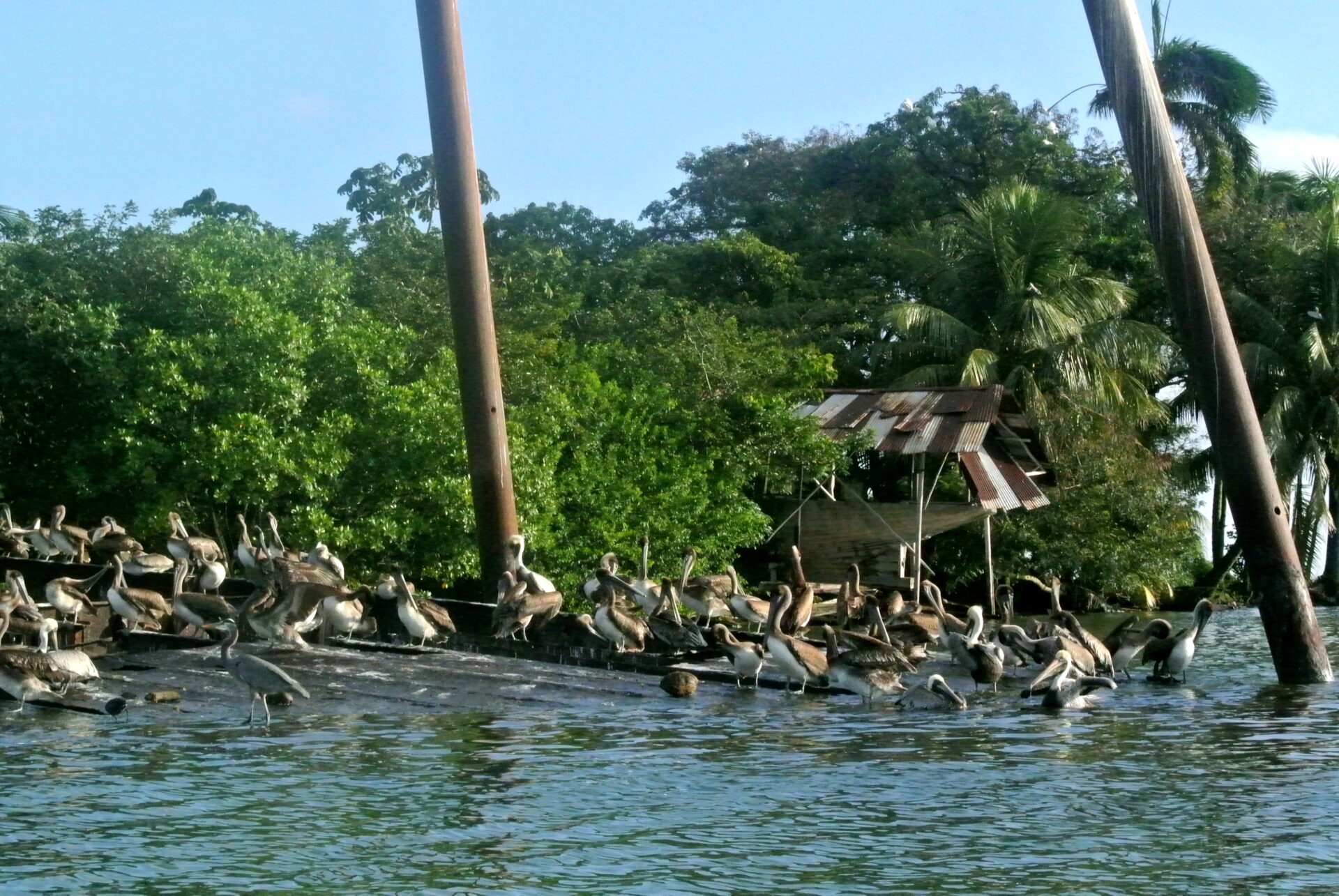
Wetlands such as Guatemala’s Laguna Grande Reserve a home for permanent residents and a stopping point for millions of migratory birds as they make their way along the coasts. Credit: Bethan John
A forest in the waves
One of the most vital wetland habitats to both wildlife and people are mangrove forests. Growing in the intertidal zones where freshwater meets the ocean, Mangrove shrub and tree species are uniquely adapted to thrive in environments so salty that most plants would not survive. With their incredible ability to filter salt and pollutants from the water and cycle nutrients, these tropical, tidal forests are one of the most productive ecosystems on the planet.
This is why, in Kerala, India, WLT is supporting our partner Wildlife Trust of India (WTI) to establish a Mangrove Conservation Hub – on a Mangrove area already successfully secured by WLT. These wetlands are essential for many families in the nearby village of Kunhimangalam, as mangroves provide food security from edible fish, molluscs, and crustaceans, as well as firewood and medicinal plants. The hub’s education programme will show local communities the countless natural benefits granted by thriving Mangrove ecosystems, encouraging their preservation in favour of agricultural conversion.
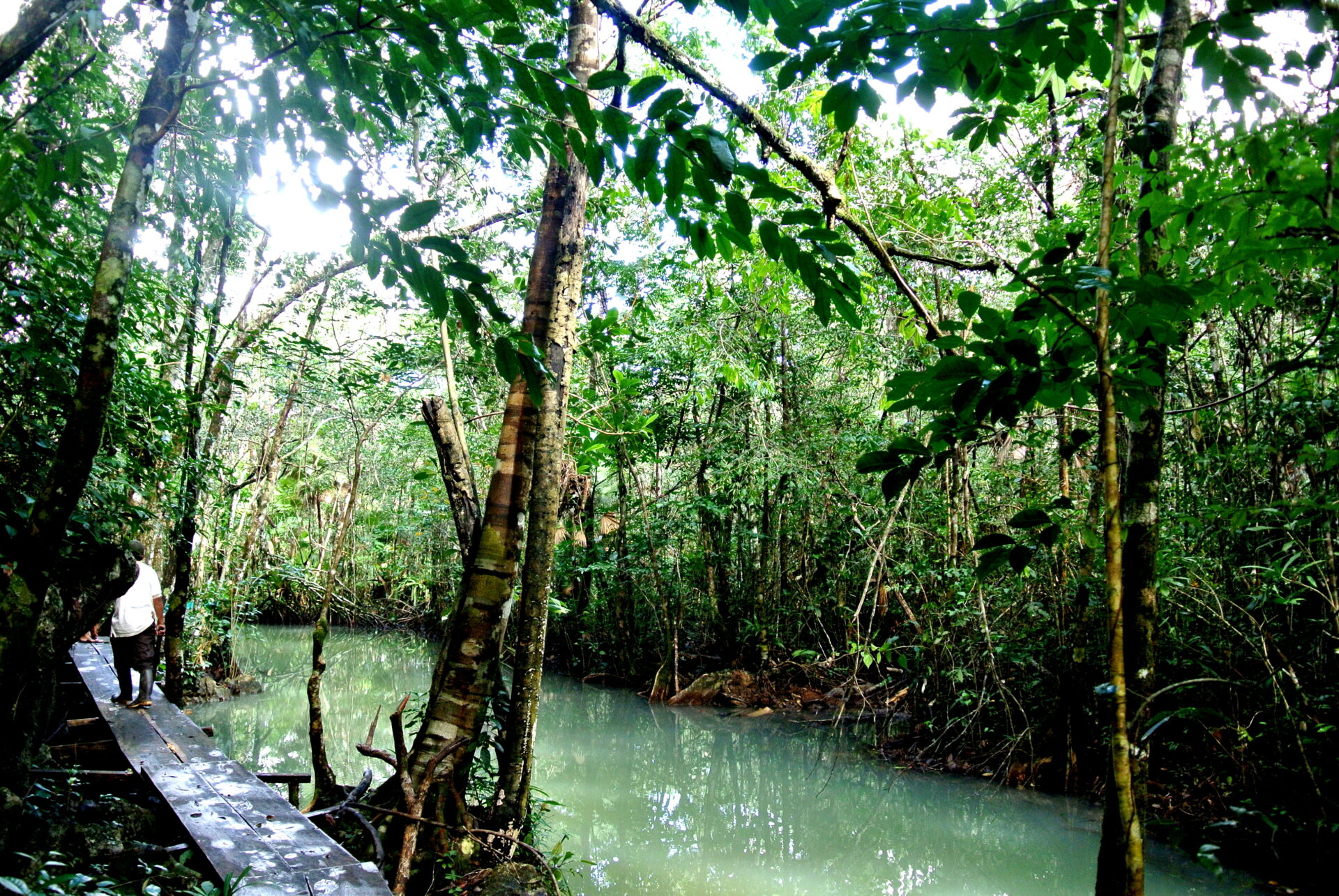
In Kerala, India, WTI’s Mangrove Conservation Hub will provide education on the countless benefits wetlands can provide to wildlife, planet, and people. Credit: Bethan John
A sink for ‘blue carbon’
The benefits extend far beyond the local wildlife and people – all wetlands are exceptional carbon sinks. Peatlands store twice as much carbon as all the world’s forests combined. Mangroves sequester up to 10 times more carbon than any other forest types. Even more impressively, unlike most trees, which store their ‘green carbon’ in leaves and bark that releases when the tree dies, mangroves store ‘blue carbon’ deep in the silt where it can stay safely in the ground for millennia – but only if left undisturbed.
In Guatemala’s Laguna Grande Reserve, our partner FUNDAECO is protecting one of the last virtually pristine networks of mangroves, seagrass meadows and lagoons in Caribbean Guatemala. Rising out of the water on their distinctive tangled roots, the dense Mangrove forests protect the coastline and provide habitat for Vulnerable West-Indian Manatees and their calves, the Endangered Baird’s Tapir and the Near-Threatened Neotropical Otter.
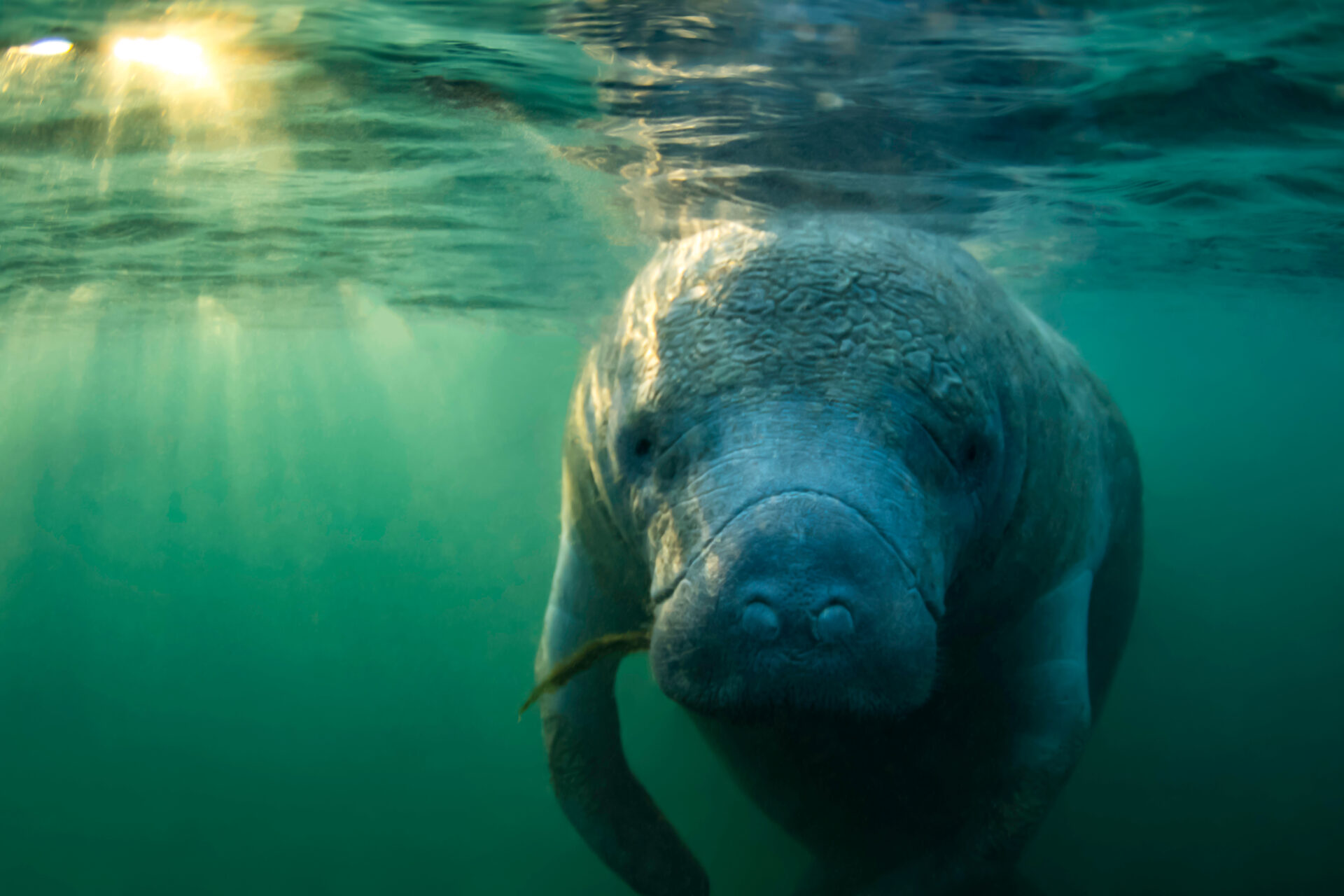
From high mountain lakes, flowing into rivers and floodplains, to estuaries that meet the sea, wetlands teem with life like this peaceful West-Indian Manatee. They are an essential part of our planet’s architecture. Credit: Shutterstock
WLT supporters have been protecting this ecosystem for more than a decade and it is currently supported by our Carbon Balanced programme. Working with conservation partners and their local communities, our Carbon Balanced programme helps businesses and individuals to balance their unavoidable carbon emissions by preserving habitats. Learn more here.
Protecting our wetlands is protecting our future
Along with providing food and shelter, if we protect our wetlands, they will protect us. When storm waves and tidal surges, made worse each year by climate change, threaten to flood inland areas- mangroves and other wetlands buffer coasts against the extreme weather events. Since around 60% of the world’s population live along the coasts, we simply cannot afford to lose these ecosystems.
The global importance of Mangrove forests and their role in fighting climate change is increasingly recognised and was a key feature of last year’s COP28 climate discussions. More than 30 countries have now joined together in the Mangrove Alliance for Climate (MAC). This places Mangrove forests at the forefront of nature-based solutions and brings us towards the Mangrove Breakthrough goal of protecting and restoring 15 million hectares of mangroves around the world.

Since 1971, when, in a small Iranian town on the shores of the Caspian Sea, the Ramsar Convention on Wetlands was first approved, World Wetlands Day has reminded us of the importance of one of the world’s most biodiverse habitats. Credit: WTI
On World Wetlands Day, help us protect our planet’s wetlands from the immense pressure they are facing.
By supporting our Action Fund, you can help our partners preserve these irreplaceable ecosystems for conservation, communities and climate.
